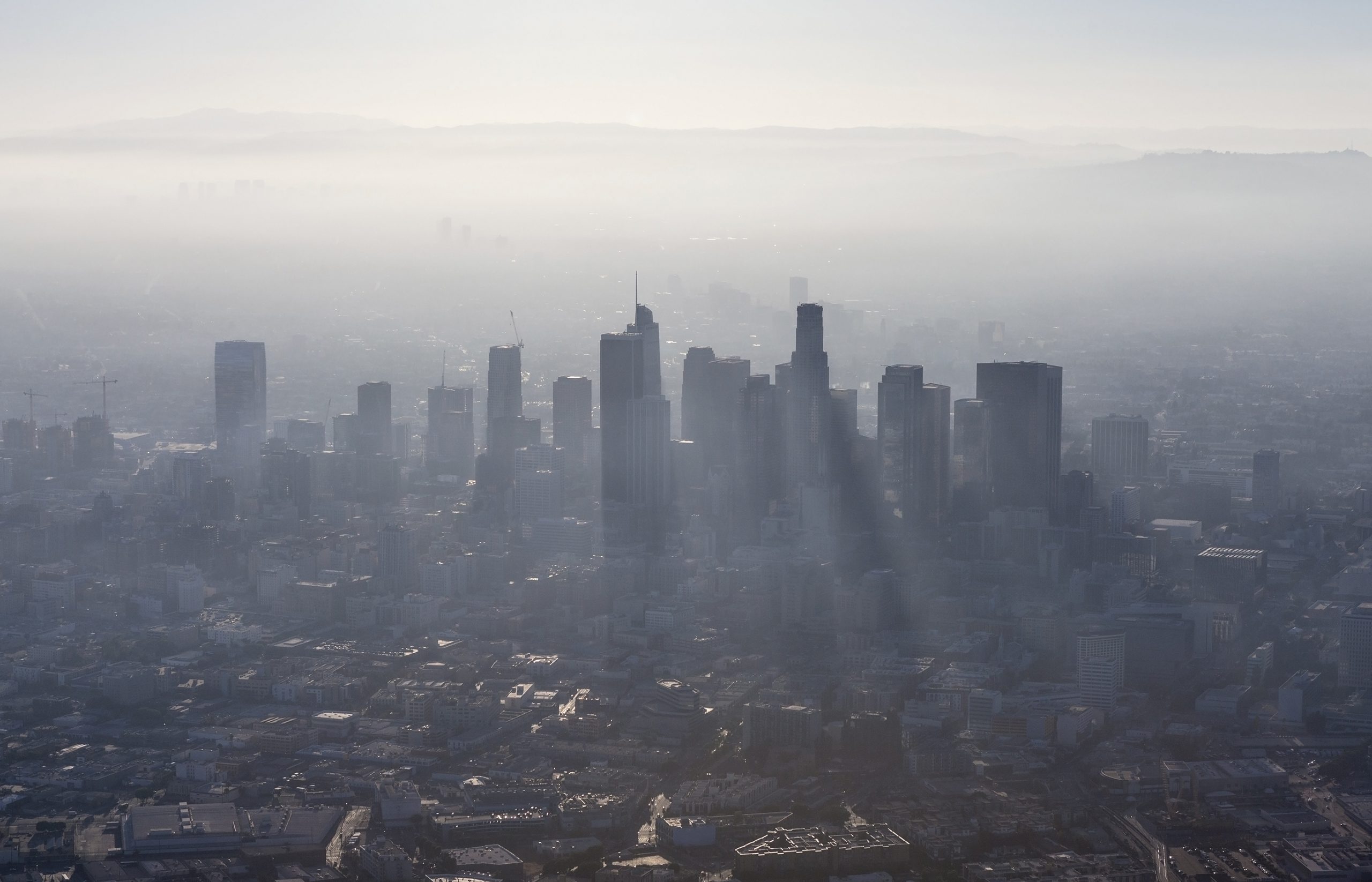Does Smog Cause Lung Cancer?
Learn about smog, a harmful air pollutant known to cause lung cancer and other illnesses after prolonged exposure.

The Link Between Smog, Particle Pollution, and Lung Cancer
For those who have been diagnosed with lung cancer, daily life can be challenging, even more so when it comes to interacting with outside factors that could worsen a prognosis or interfere with lung cancer treatment. One of these outside factors is the inhalation of smog and particle pollutants, which can complicate a person’s life expectancy.
Smog, a harmful mixture of hazardous air pollutants, can directly contribute to serious health risks, including lung cancer. The most dangerous components of smog are tiny particulate matter, which can be inhaled into the lungs. Once inside, these microscopic particles can become lodged in lung tissue, causing inflammation and cellular damage. Over time, this can lead to the development of malignant tumors. Studies show that long-term exposure to smog significantly increases the risk of lung cancer, particularly in individuals living or working in highly polluted environments. Understanding this link between air quality and lung cancer is important not only for those who already have lung cancer but also for those wanting to avoid it.
Smog Health Effects on the Lungs
Smog is a mixture of things. It combines microscopic solid and liquid particles in the air with sunlight and many other components like acids, nitrogen oxides, volatile organic compounds, metals, soil, and dust particles. Particle pollution can affect the quality of both outdoor and indoor air and can be very harmful to human health.
Outdoor smog can be caused by emissions from power plants, vehicle exhaust, forest fires, and other industrial sources where hazardous materials are broken down or oxidized.
Indoor pollution occurs primarily when contaminated buildings are poorly ventilated, and toxins get trapped inside, making it easier for workers or residents nearby to inhale or ingest them. Bigger smog particles can irritate the eyes, nose, or throat, but smaller materials can easily be inhaled or ingested, making their way into the lungs, bloodstream, or other parts of the body and potentially causing diseases to develop.
Smog can severely damage the lungs, both in the short and long term. The fine particles in smog are small enough to bypass the body’s natural defenses and penetrate deep into lung tissue, similar to mesothelioma or asbestosis. Over time, this exposure leads to chronic inflammation, which can scar lung tissue and make it harder to breathe. This prolonged irritation weakens the lungs’ ability to function properly and increases the risk of respiratory diseases, including chronic obstructive pulmonary disease (COPD) and lung cancer. Early symptoms include coughing, wheezing, and shortness of breath, but prolonged exposure can have life-threatening consequences.
Can Pollution Particles Cause Lung Cancer?
Yes, smog can cause lung cancer, especially after prolonged exposure. When inhaled, the tiny particles in smog can become trapped in the lungs, where they cause ongoing irritation and inflammation. Over time, this repeated damage can lead to cellular changes, increasing the risk of malignant lung tumors forming. The risk is higher for those exposed to smog for extended periods, particularly in urban areas or industries with poor air quality. It may take a while for symptoms to appear, but the damage from smog is cumulative and irreversible.
Lung cancer is the most common disease caused by vulnerability to smog and particle pollution because the toxins are primarily inhaled. When the tiny, poisonous particles make their way into the lungs, they become wedged in the tissue, eventually irritating the area enough to form malignant tumors. There’s a long latency period (the time for the illness to grow and cause visible symptoms) for lung cancer or related diseases that can take anywhere from 20 or more years after the initial exposure to develop.
Who Particle Pollutions Effects
Certain places are more likely to encounter higher levels of particle pollution than others. People are most commonly exposed to smog in or around the workplace, otherwise known as occupational exposure. Occupational exposure happens when employees come in contact with some form of hazardous material at a job site.
Firefighters, construction workers, first responders, and other outdoor occupations are the most at risk for harmful levels of vulnerability to harmful air pollutants (HAPs). When someone is around HAPs for too long, they may eventually develop lung cancer or pleural mesothelioma, among other diseases.
Although workers are one of the demographics most affected, smog doesn’t just affect people in hazardous jobs; it also poses a risk to anyone exposed to high levels of pollution. Yes, people most at risk include outdoor workers like firefighters, construction workers, and farmers, but urban residents, children, the elderly, and those with preexisting lung conditions such as asthma or bronchitis are also very much at risk. Additionally, people living near major highways or industrial areas face increased exposure to harmful air pollutants, which can accumulate over time, damaging lung health. Regardless of your occupation or location, long-term exposure to smog significantly increases your risk of developing serious respiratory diseases, including lung cancer.
[/inline-img]

Tips for Protecting Yourself From Particle Pollution and Other Hazardous Chemicals
There are a number of precautions you could take to prevent lung cancer and reduce the chances of vulnerability to smog and other toxins in the workplace. Some steps an employee can take include the following:
- Wear adequate face, hand, and body coverings while working.
- Properly clean coverings and equipment after use.
- Increase workspace ventilation.
- Meet label precautions.
- Store open containers of unused paints or other toxic materials within a sealed area so that their emissions do not seep into the environment, creating smog.
- Reduce pesticide use by utilizing less toxic materials and more efficient techniques.
- Obey disposal guidelines and throw away unused or little-used containers properly.
- Pack materials away from children, pets, or untrained individuals.
- Never mix products unless directed.
Your employer should train you and provide standard operating procedures (SOPs) for the efficient and safe handling of hazardous products that could seep into the air and environment, causing particle pollution and subsequent exposure. If there’s no safe way to handle the material, it’s your employer’s legal responsibility to adequately remove the toxin before allowing their employees to work there.
Smog-Related Lung Cancer Claims and Legal Rights
As an employee, you have legal rights to a safe workplace. Laws and regulations from agencies like OSHA, the World Health Organization, and the Environmental Protection Agency are in place to protect workers from dangerous smog and air pollution exposure. If your employer fails to follow these safety standards, they could be held legally accountable if it leads to lung cancer or other serious health conditions. Employers are required by law to:
- Maintain a workplace free from serious and recognized hazards
- Provide and enforce the use of safe tools and equipment
- Clearly label hazardous materials and post visible warnings
- Update and implement safety procedures that meet health regulations
- Offer safety training in a language employees fully understand
If your employer neglects these responsibilities and you develop lung cancer or another illness due to exposure, you may be entitled to compensation. Understanding your rights is the first step in protecting your health and holding your employer accountable.

What to Do If You Were Exposed to Particle Pollution
If you’ve developed lung cancer due to prolonged exposure to smog or other harmful air pollutants in the workplace, you have legal rights. U.S. labor laws, enforced by agencies like OSHA, require employers to provide a safe working environment free of hazardous substances. If your employer fails to meet these standards and you become ill as a result, you could be eligible for financial compensation. This compensation can cover medical expenses, lost wages, and support for your family. Legal action can also prevent further harm to others by holding negligent employers accountable and enforcing stricter safety measures.


